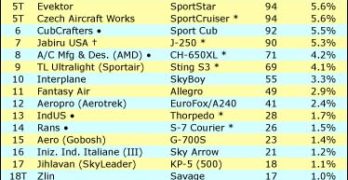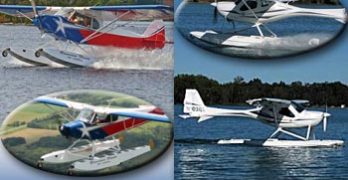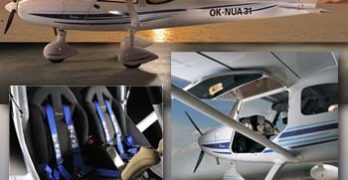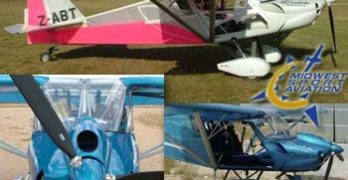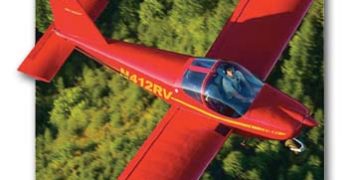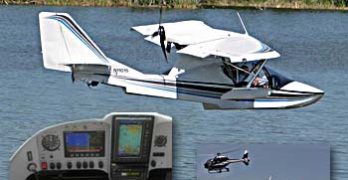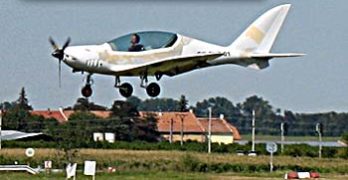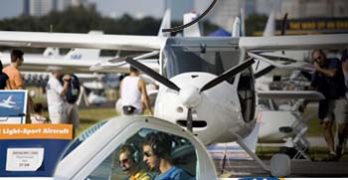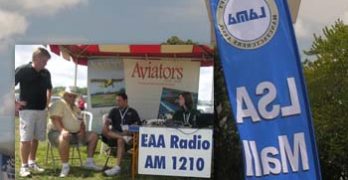As the challenging year for aircraft sales grinds on, Light-Sport Aircraft continue to hold their own. In tough times, when cash is tight, small enterprises may fare better than large companies. Their low expense structures, modestly compensated managers and employees, and lean manufacturing — as allowed by industry-standards certification — become strengths. *** But we see another quality. The half-million-plus general aviation pilots are more accepting of LSA today than three years ago. Organizations like AOPA are more fully embracing LSA, because their members are calling to ask questions. (Watch for a surprise LSA announcement at AOPA’s Aviation Summit in about a month!) GA pilots make up most buyers of LSA and those aviators now recognize the brands and have begun to acquire faith in companies certifying themselves (though many are still reserving judgement). *** Through August, a full month after AirVenture, the LSA fleet has grown to just under 1,700 fully-built aircraft not including ELSA kits or alternative aircraft like trikes and powered parachutes, nor any converted ultralights.
Pair of Floatplanes Announced: Legend and Remos
We’ve arrived at the end of the main float-flying season, but two of our largest Light-Sport Aircraft manufacturers just announced floatplane models. Welcome to the American Legend FloatCub and the Remos GX on floats. Each company contracted with float experts (a big difference from SeaMax or SeaRey). *** The most successful American LSA producer, American Legend won approval on October 2 for their Amphibious Legend FloatCub after declaring they met ASTM standards. FloatCub was put on sale for $159,000 and the first customer aircraft is being assembled. Legend went to long-established float company, Baumann Floats of New Richmond, Wisconsin. The new model flew in July, 2009 and made an appearance at Oshkosh. Unlike original Piper Cubs that were often put on floats, the Legend Cub has doors on both sides, a big benefit when docking. If purchased with the 120-hp Jabiru 3300, Legend FloatCub should prove quite energetic even at high elevations.
Handsome New High Wing… Sirius — SLSA #103
Most folks following the Light-Sport Aircraft development know the Sting, refreshed for the U.S. market with the S3 model. I covered the development announcement of TL Ultralight’s new high wing. Now, welcome to the TL3000 Sirius as the newest SLSA to hit the market in a blur of new offerings seemingly triggered after the industry hit #100. *** Importer SportairUSA maneuvered their low-wing, all-carbon-fiber Sting S3 into one of the best-equipped LSA on the market. Adding a high wing gives the company new versatility to meet market interest. *** I see the potential for keen demand from GA pilots, especially those legions trained in high-wing, yoke-controlled Cessna models. Sirius’ 48-inch wide cabin is nine inches wider than a C-172 and it can haul 420 pounds of payload even when topped off with 30 gallons of fuel that can take you 800 miles (numbers will vary depending how you equip a Sirius).
Cheetah XLS Speeds through SLSA Approval — #101
Reaching SLSA model number 100 produced loads of media attention and a feeling of pride in reaching such a benchmark in less than five years. How do you follow that act? With SLSA #101, naturally. *** Welcome to the Cheetah from Rainbow Aircraft in South Africa, imported by Midwest Sport Aviation based in Wisconsin. While working on ASTM approval the Syvertson brothers sold a kit version. If this modestly priced SLSA is beyond your budget, the Amateur-Built kit can save $10-20,000. *** The ready-to-fly Cheetah represents one of the true bargains of the SLSA industry, priced at $52,950 for either trigear or taildragger models powered by the 85-hp Jabiru and delivered with a MGL radio, cloth-finished interior, and those cool swing-up armrests with built-in throttle on each side. Even well optioned, a fully-built SLSA Cheetah can stay under $60,000 and that’s the price some folks expected for Light-Sport Aircraft back when the rule was announced… so there you go.
Van’s RV-12 is SLSA #100; Here Come the ELSA ’12s
[UPDATE: The Krucker Cygnet won approval on July 3rd, making that weight-shift LSA #99… so Van’s RV-12 is technically the #100 LSA model to win an airworthiness certificate. It was previously reported as #99.] The top-selling kit airplane producer, Van’s Aircraft of RV-xx fame, secured an airworthiness certificate for their fully-built RV-12 Special Light-Sport Aircraft on July 21, 2009. And the next day, the company’s East Coast representative, Mitchell Lock, got an ELSA certificate for his RV-12. EAA reported that 250 RV-12s are under construction around the world. *** So, quickly, Van’s looks ready to dominate the ELSA community that has been waiting to take off. True, thousand of ELSA are flying today — many more than SLSA at present — but that’s because so many “fat ultralights” were converted to ELSA status under FAA’s now-expired grandfather period. *** Van’s reports that it will take 600-900 hours to complete an RV-12 to unpainted stage, so the rush of RVs into the LSA fleet may not be swift, but they’ll just keep coming.
Ultralight Trainers…Exemptions?…SLSA Trainers
Ah, sweet Part 103 ultralights. These lightest of powered aircraft have the least FAA regulation of any flying machine. A single piece of letter paper holds the entire rule. But how do you learn to safely fly a single seater? Oh, there’s the rub. *** Through January 31, 2010, two-seat ultralights converted to ELSA status may train pilots for hire. Then they must cease… maybe. Some feel that the nation lacks enough such trainers so Aero Sports Connection petitioned for an extension. Sounds reasonable. *** But what about companies that spent resources to win FAA approval? It sounds like those who played by the rules as FAA wished could miss their reward of taking over such training aircraft sales. The controversy has complications and you probably don’t want to read it all. *** But here’s what industry organization LAMA has to say: “In the 4.3 years since the first approval, 100 SLSA models have been approved.
SeaRey Reports Superb Oshkosh; Who Will Get #100?
We sit on the edge of hitting triple digits of Special Light-Sport Aircraft. Just before Oshkosh started, Van’s Aircraft announced their RV-12 qualified for SLSA airworthiness (which also allows the Oregon company to sell ELSA kits). People have started to ask, “Who will offer Number 100 SLSA?” One possibility is the SeaRey from Progressive Aerodyne. *** SeaRey marketing man, Darrell Lynds reported a spectacular Oshkosh event, “We sold 11 kit SeaRey aircraft (the LSX) and four SLSA versions to be called the SeaRey Sport.” That represents quite a performance, causing me to inquire what amount of money changed hands in order to call these an order. “We collected $5,000 toward a kit and $10,000 on a fully-built SLSA,” explained Darrell. I’d call that enough cash per airplane to make for genuine orders. *** I spoke with many sellers at Oshkosh who reported “very solid leads,” and “genuinely interested buyers,” but a few complained that despite these positive comments, they were not seeing the cash.
A First Look at Two New Tandem LSA
Here come the new tandems. And I do mean new! Suspending a full flight-trial regime, U.S.-based MySky took their new MS-1 on a long maiden voyage from Daytona Beach, Florida to Oshkosh 2009. And just yesterday, the Slovak Republic-based sportShark, from Shark.Aero, took its first flight. *** Tandems seat occupants fore and aft like some existing SLSA models but that’s where the similarities end. MS-1 and sportShark are clean-sheet designs aimed at performance and comfort, where all tandems presently approved are recreational aircraft. *** Other than the composite Sky Arrow*, all other seven tandems in the SLSA List are simpler, first-generation designs. All are fabric covered. None are speedsters. (Note: You can find all these qualities for any of the 99 SLSA models using PlaneFinder 2.0.) *** One and sportShark are second-generation designs. In both cases they were created after and because of the Light-Sport rules and ASTM industry-standards certification.
Flying Kids in LSA; AOPA’s New Aviation Summit
We all discuss declining numbers of pilots in FAA’s database. Despite widespread concerns, efforts to bring more people into aviation have fallen short. *** Several worthy projects have attempted to reverse the drop in the pilot population. Over the years, EAA’s Young Eagles program has put nearly a million and a half kids into airplanes. That’s a wonderful achievement, thanks to EAA’s leadership and many thousands of willing volunteer pilots. One LSA provider, Remos, has worked with the organization to provide flights to a large flock of kids attending EAA summer flying camps (photo). *** Yet we must do more to interest people in flying. Along those lines, I’m at once amazed and appreciative that AOPA and EAA have chosen to combine efforts (finally!). AOPA is also completely refashioning its former Expo into the new AOPA Aviation Summit. “For the first time, AOPA will be reaching outside the aviation community to welcome the public into all general aviation has to offer.” AOPA’s new initiative, combined with a new collaboration with EAA, joined to entry-level Light-Sport Aircraft looks like a winner to me.
LSA Attain New Plateau in Aviation World
Viewed from the LSA Mall, AirVenture 2009 was much more than the summer’s big celebration of flight. Several important events tell a story of growing acceptance of LSA. Here’s a short list: LAMA hosted a meeting of G10 (the 10 largest LSA producers) and another of G5, while paying visits to every LAMA member in attendance. *** At the G10 meeting and again at LAMA’s press conference, Avemco president Jim Lauerman detailed his company’s support (in writing) for LAMA’s audit activities. His expressions were corroborated by Falcon Insurance VP Bob Mackey. *** Earl Lawrence, VP of government relations for EAA, brought brand new FAA administrator Randy Babbitt to the LSA Mall, where he met with presidents of LSA companies: Flight Design, Tecnam, Remos, and IndUS. *** At AOPA’s invitation, LAMA arranged a meeting for several LSA industry leaders with new AOPA president Craig Fuller.
- « Previous Page
- 1
- …
- 40
- 41
- 42
- 43
- 44
- …
- 64
- Next Page »


